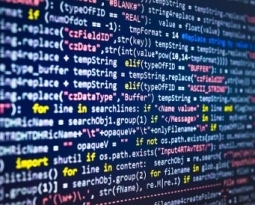Colorado Patent of the Month – April 2022
Climbing is a fantastic workout, helping to condition upper body, lower body, and core strength in one go. Ofcourse, a climber might not always be able to get outside and climb a rock wall or get to the climbing gym. And in other cases, beginners may not be strong enough to effectively climb these walls yet. CLMBR1, LLC has designed a climbing machine that helps to strengthen all the necessary muscles so you can practice from the comfort of your own home.
Just like a stairclimber mimics walking upstairs, their device mimics the movement of climbing – from leg lifting and propelling motions to arms pulling and holding. Their device is small in footprint considering the fully body motion required. It looks similar to a ladder, with two supporting poles on each side. The ladder rungs are replaced with foot and hand holds. These holds are positioned in a divet within each pole, designed to move with the foot or hand while applying a level of resistance. Each foot or hand hold is mounted to a self-lubricating slide assembly which allows them to smoothly slide up and down the side poles.
The difficulty can be increased or decreased using an adjustable resistance mechanism. The user first moves their leg up to the next step by lifting their leg. The foot pedal moves with them. As they brace to mimic the movement of lifting themselves up and pushing off this step, the pedal engages the resistance so that the user must actively push the pedal down and away from them. This is repeated on each side as they climb. SImilarly, the handholds move up and down with resistance as the user climbs.
This climbing machine provides the basics for any beginner to build strength. It also provides increased resistance so that even an experienced climber can be challenged. The machine offers both a high intensity and low impact workout, ensuring you get a worthwhile training session with minimal body strain.
Are you developing new technology for an existing application? Did you know your development work could be eligible for the R&D Tax Credit and you can receive up to 14% back on your expenses? Even if your development isn’t successful your work may still qualify for R&D credits (i.e. you don’t need to have a patent to qualify). To find out more, please contact a Swanson Reed R&D Specialist today or check out our free online eligibility test.
Who We Are:
Swanson Reed is one of the U.S.’ largest Specialist R&D tax advisory firms. We manage all facets of the R&D tax credit program, from claim preparation and audit compliance to claim disputes.
Swanson Reed regularly hosts free webinars and provides free IRS CE and CPE credits for CPAs. For more information please visit us at www.swansonreed.com/webinars or contact your usual Swanson Reed representative.

















